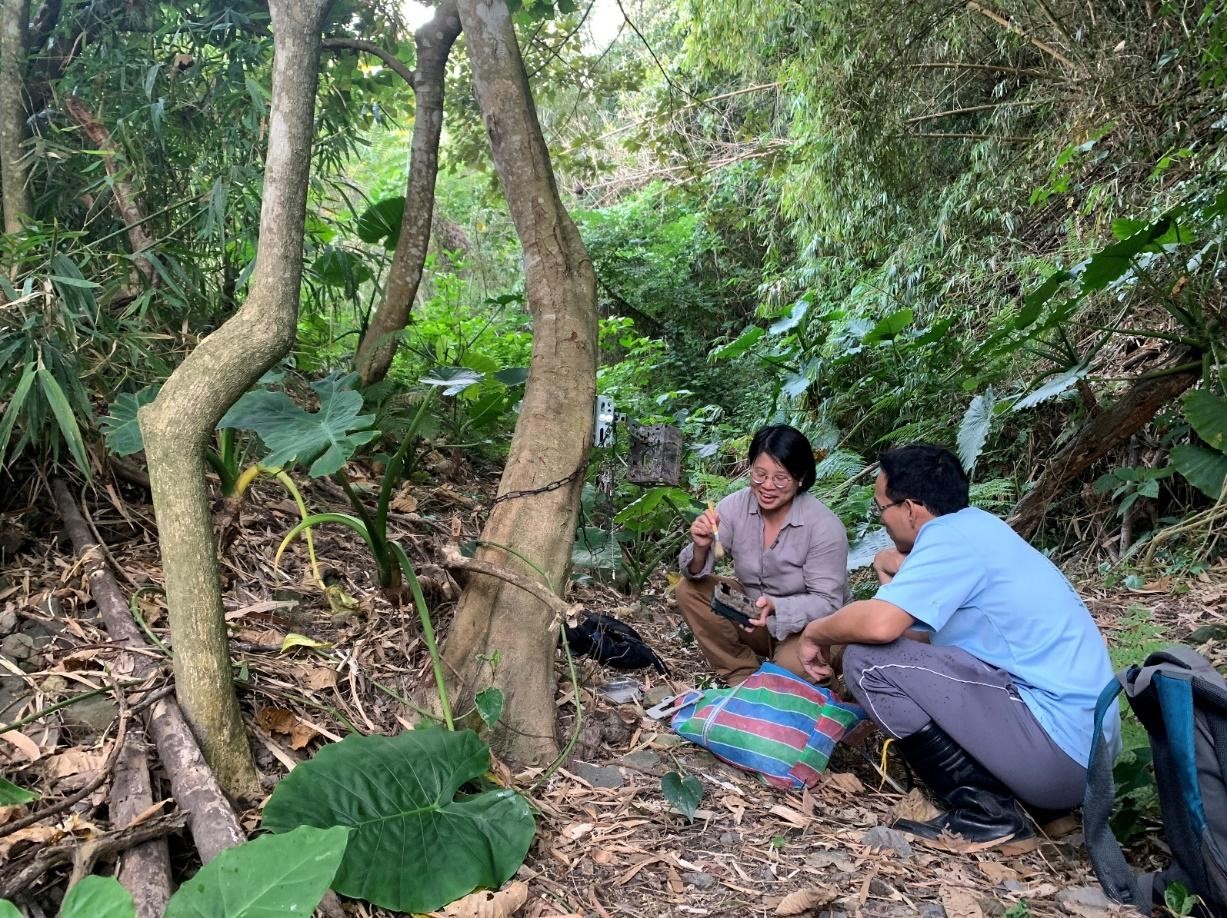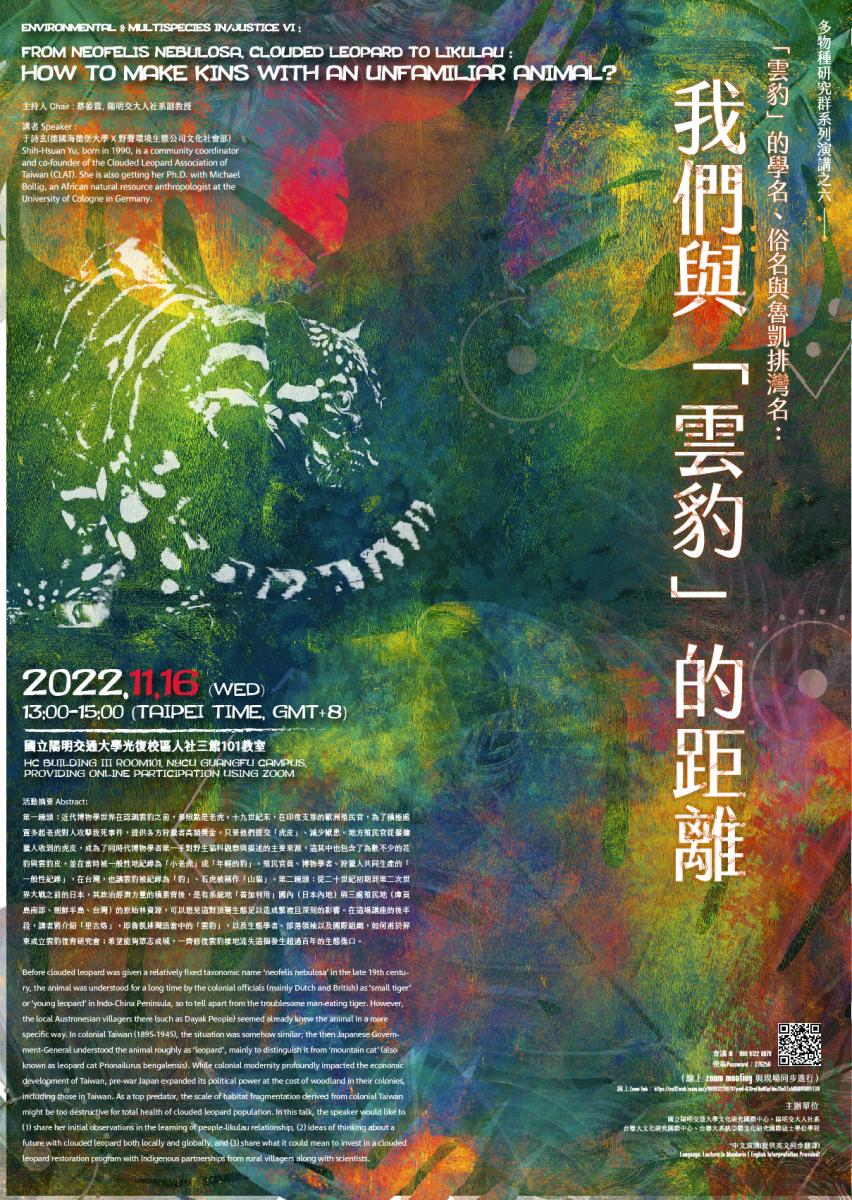多物種研究群系列演講之六——
「雲豹」的學名、俗名與魯凱排灣名:我們與「雲豹」的距離

*中文演講(提供英文同步翻譯)
Language: Lecture in Mandarin ( English Interpretation Provided)
- 主持人Chair:蔡晏霖, 陽明交大人社系副教授
- 講者Speaker:于詩玄( 雲豹復育研究會理事 X 野聲環境生態公司研究員 X 科隆大學人類學系博士生 )
Shih-Hsuan Yu, born in 1990, is a community coordinator and co-founder of the Clouded Leopard Association of Taiwan (CLAT). She is also getting her Ph.D. with Michael Bollig, an African natural resource anthropologist at the University of Cologne in Germany.
- 活動摘要 Abstract:
第一鏡頭:近代博物學世界在認識雲豹之前,參照點是老虎。十九世紀末,在印度支那的歐洲殖民官,為了積極處置多起老虎對人攻擊致死事件,提供各方狩獵者高額獎金,只要他們提交「虎皮」、減少獸患。地方殖民官從僱傭獵人收到的虎皮,成為了同時代博物學者第一手對野生貓科觀察與描述的主要來源,這其中也包含了為數不少的花豹與雲豹皮,並在當時被一般性地紀錄為「小老虎」或「年輕的豹」。殖民官員、博物學者、狩獵人共同生產的「一般性紀錄」,在台灣,也讓雲豹被紀錄為「豹」、石虎被稱作「山貓」。第二鏡頭:從二十世紀初期到第二次世界大戰之前的日本,其政治經濟力量的積累背後,是有系統地「善加利用」國內(日本內地)與三處殖民地(庫頁島南部、朝鮮半島、台灣)的原始林資源,可以想見這對頂層生態足以造成繁複且深刻的影響。在這場講座的後半段,講者將介紹「里古烙」,即魯凱排灣語當中的「雲豹」,以及生態學者、部落領袖以及國際組織,如何甫於屏東成立雲豹復育研究會;希望能夠眾志成城,一齊修復雲豹棲地流失這個發生超過百年的生態傷口。
Before clouded leopard was given a relatively fixed taxonomic name ‘neofelis nebulosa’ in the late 19th century, the animal was understood for a long time by the colonial officials (mainly Dutch and British) as ‘small tiger’ or ‘young leopard’ in Indo-China Peninsula, so to tell apart from the troublesome man-eating tiger. However, the local Austronesian villagers there (such as Dayak People) seemed already knew the animal in a more specific way. In colonial Taiwan (1895-1945), the situation was somehow similar; the then Japanese Government-General understood the animal roughly as ‘leopard’, mainly to distinguish it from ‘mountain cat’ (also known as leopard cat Prionailurus bengalensis). While colonial modernity profoundly impacted the economic development of Taiwan, pre-war Japan expanded its political power at the cost of woodland in their colonies, including those in Taiwan. As a top predator, the scale of habitat fragmentation derived from colonial Taiwan might be too destructive for total health of clouded leopard population. In this talk, the speaker would like to (1) share her initial observations in the learning of people-likulau relationship, (2) ideas of thinking about a future with clouded leopard both locally and globally, and (3) share what it could mean to invest in a clouded leopard restoration program with indigenous partnerships from rural villagers along with scientists.






%E5%B0%81%E9%9D%A2.jpg)